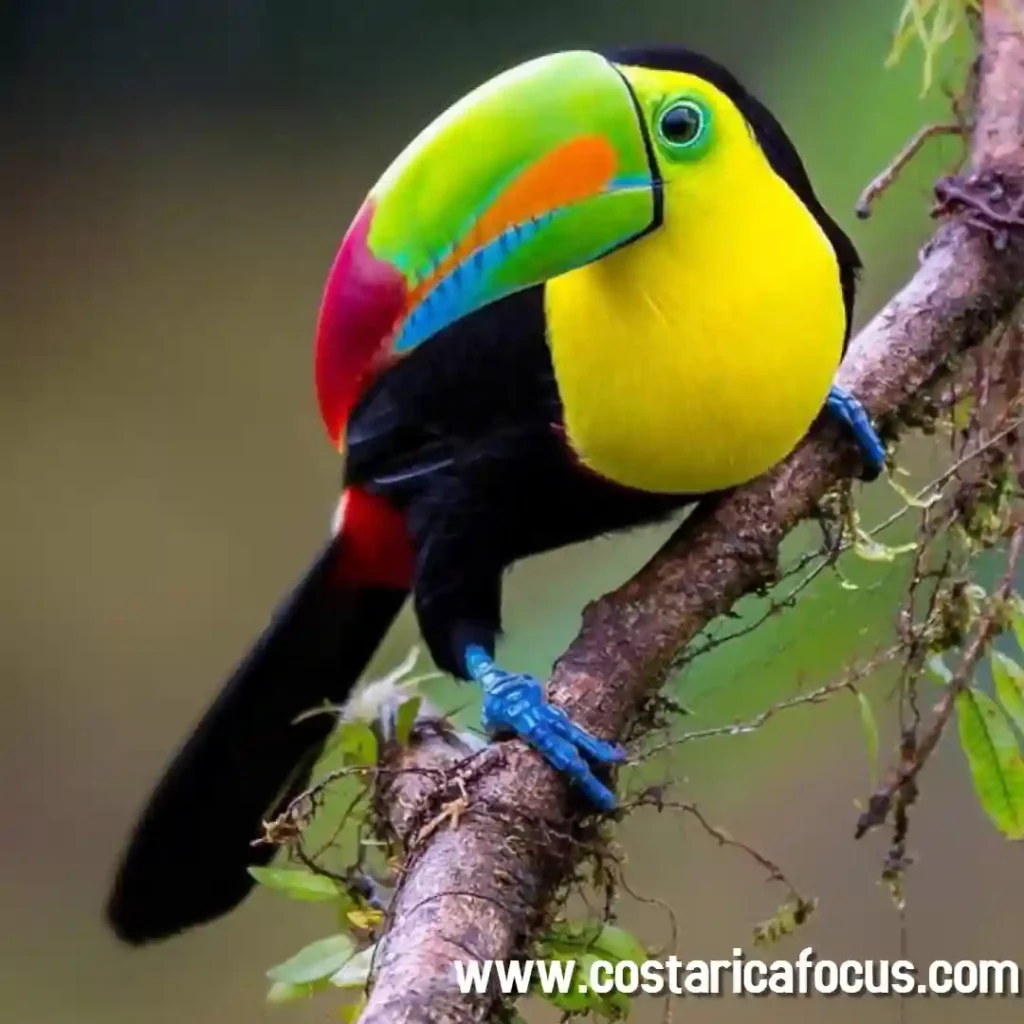Keel-billed Toucan
The Keel-billed Toucan (Ramphastos sulfuratus) is one of the most iconic and vividly colored birds of the Neotropics, best known for its oversized, rainbow-colored bill. Native to Central and parts of northern South America, this toucan thrives in tropical lowland rainforests and is particularly abundant in the Caribbean slope of Costa Rica. Though generally non-migratory,…

Ramphastos sulfuratus
Scientific Name
Ramphastidae
Family
Piciformes
Order
R. s. sulfuratus
Subspecies. Found in southeastern Mexico, Belize, and northern Guatemala.
R. s. brevicarinatus
Subspecies. Found from southeastern Guatemala to northern Colombia and northwestern Venezuela; this is the subspecies present in Costa Rica.
Range and Habitat of Keel-billed Toucan
Geographic Range
Southern Mexico through Central America to northern Colombia and northwestern Venezuela.
Migratory Patterns
Non-migratory; resident throughout its range.
Preferred Habitat
Tropical and subtropical rainforests, lowland evergreen forests, and secondary growth forests.
Altitude Range
Sea level up to 1,900 meters (6,200 feet).
Costa Rica Habitat
Commonly found in the Caribbean lowlands and foothills, including areas like Tortuguero, La Selva Biological Station, and Arenal. Also present in parts of the Pacific slope, such as Monteverde. They inhabit both primary and secondary forests, as well as forest edges
Conservation Status
Near Threatened
Conservation Status
Population Status
Declining; currently listed as Near Threatened on the IUCN Red List due to ongoing habitat loss and fragmentation.
Deforestation for agriculture and development, illegal pet trade, and habitat fragmentation caused by logging and infrastructure expansion.
Conservation efforts
Deforestation for agriculture and development, illegal pet trade, and habitat fragmentation caused by logging and infrastructure expansion.
Primary Threats
Deforestation for agriculture and development, illegal pet trade, and habitat fragmentation caused by logging and infrastructure expansion.
Keel-billed Toucan Identification
How to Identify the Species
Rarity Level:
CommonBest Viewing Times:
Early Morning (Dawn - 8 AM), Evening (Dusk)
Size
Length: 42–55 cm (16.5–21.5 in); Weight: 380–500 g (13–18 oz); Wingspan: 60–75 cm (24–30 in)
Plumage
Predominantly black body with a bright yellow throat and chest, red undertail coverts, and blue feet.
Distinctive Features
Large, colorful bill (about one-third of body length), primarily green with red tip and orange sides; zygodactyl feet (two toes facing forward and two backward).
Sexual Dimorphism
Minimal; males may have slightly larger and longer bills than females.
Diet and Feeding Behavior
Primary Diet
- Mainly frugivorous, consuming a variety of fruits; also eats insects, lizards, tree frogs, and bird eggs.
Foraging Techniques
- Uses its large bill to reach and manipulate food; often tosses food into the air to swallow it whole.
Feeding Times
- Most active during early morning and late afternoon.
Behavior Patterns
Keel-billed Toucan
Social Structure
Highly social; typically seen in small flocks of 6–12 individuals.
Song and Vocalization
Emits a frog-like croaking call, audible up to half a mile away.
Courtship and Mating Ritual
Engages in bill fencing and mutual feeding; pairs often exchange fruit as part of bonding.
Territoriality
Not strongly territorial; flocks may share overlapping home ranges.
Birdwatching Tips
Best Locations for Spotting Keel-billed Toucan
Tortuguero National Park, La Selva Biological Station, Arenal Volcano National Park, and Monteverde Cloud Forest Reserve.

Best Time of the Year
In Costa Rica, best observed during the wet season (May to November) when fruit is abundant and breeding activity increases.
Common Behavior
Look for flocks in the canopy during early morning or late afternoon; listen for their distinctive croaking calls.
Recommended Gear
Binoculars with good light-gathering capability, a field guide to Central American birds, and a camera with a telephoto lens for photography.
Breeding and Nesting Behavior
Breeding Season
Varies by region; in Costa Rica, breeding aligns with the wet season (May to November).
Nesting Sites
Nests in natural tree cavities or abandoned woodpecker holes.
Clutch Size
Two to four white eggs.
Incubation Period
Parental Care
Both parents feed and care for the chicks, which fledge after about 8–9 weeks.
Did You Know?
Where is the best place to see Keel-billed Toucan?
In Costa Rica, prime locations include Tortuguero, La Selva, Arenal, and Monteverde.